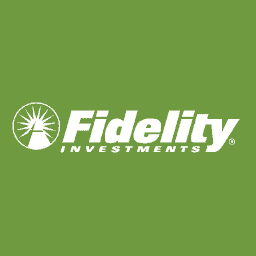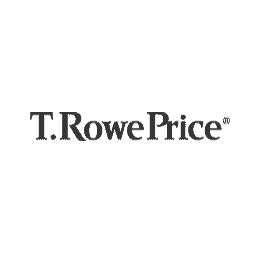Index funds are one of the most popular investment vehicles for private and institutional investors alike.
Learn what index funds are, how they work, and discover a list of the best index funds you can add to your investment portfolio in 2020.
What Are Index Funds?
An index fund is an investment fund – either a mutual fund or an exchange-traded fund (ETF) – that tracks the value of a basket of stocks, bonds, or other assets.
The idea behind index funds is to provide a low-cost investment vehicle for investors who want exposure to a specific asset class, such as stocks or bonds.
The main selling point of index funds is that they incur substantially lower management fees than actively-managed funds because the fund manager simply buys and holds the constituents of an index, and only rebalances the fund when the index constituents change.
While the difference in fees between, for example, 0.1% and 1% don’t seem that significant, over a 15 to 25-year horizon, that 0.9% will make a substantial difference in your long-term portfolio returns. That is why low-cost index funds have gained in so much popularity in the last two decades.
Moreover, several studies have suggested that passively-managed index funds tend to outperform actively-managed funds. While portfolio managers often argue that their expertise and skill in picking stocks is worth the 1-2% annual management fee, the reality is that portfolio managers regularly underperform the index that their fund is benchmarked against. Combined with the higher management fees, there is a strong argument for choosing index funds over actively managed mutual funds.
Even Wall Street Veteran Warren Buffet is a firm believer of investing in index funds. In early 2017, he stated:
When trillions of dollars are managed by Wall Streeters charging high fees, it will usually be the managers who reap outsized profits, not the clients. Both large and small investors should stick with low-cost index funds.
Warren has a point. Fund management fees are deducted every year regardless of whether the fund has performed well or not. Moreover, in the years where the fund does outperform the benchmark, you still need to deduct the fees from your returns to calculate your actual investment profits.
| In a Nutshell Index funds enable you to gain exposure to asset classes like stocks and bonds without having to pay high fund management fees. What’s more, your index fund investments may outperform actively-managed mutual funds, especially when taking fees into consideration. |
Now, let’s look at how you can invest in index funds.
Learn what index funds are, how they work, and discover a list of the best index funds you can add to your investment portfolio in 2020.
How to Invest in an Index Fund
The good news is investing in an index fund is easy. If you already have a brokerage account, you simply log on, choose a fund that your broker supports, and hit that buy button. That’s literally it!
But in case you are entirely new to investing and haven’t signed up for an online brokerage account yet, we will outline all the steps – from start to finish – that you need to take to invest in an index fund.
- Choose a fund
- Set up an online brokerage account
- Fund your account
- Buy an index fund
Now, let’s look at each step in detail.
1. Choose a fund
First and foremost, you should decide which index funds you want to invest in. That will help you to determine which online brokerage you should sign up.
For example, if you have found index funds by Fidelity that you want to invest in, you will need to either sign up directly for an account with Fidelity or for an online broker that also lists Fidelity’s funds. The good news is that most online brokerages support the most popular index funds, regardless of the issuing company. Therefore, it is advisable to choose an online broker with zero trading fees.
2. Set up an online brokerage account
Once you know what fund(s) you want to invest in, you will need to sign up to an online broker.
The sign-up process is usually very straightforward. It includes registering with your email address, providing personal information, and some form ID verification process. Since all of that can be done digitally, signing up for an online brokerage account should only take you a few minutes.
3. Fund your account
The next step will be to fund your brokerage account. Unfortunately, funding your account – via wire transfer or otherwise – will likely take more than just a few minutes.
Depending on the type of money transfer, this could take more than 24 hours. Once your account is funded, however, you are ready to start investing.
4. Buy an index fund
Finally, you search for the index fund(s) you want to invest in and hit that buy button.
And that’s it! Now, you are invested in an index fund.
Best Index Funds
We have researched and reviewed a range of index funds to provide you with our top ten picks of the best index funds you can invest in today. To determine our Banks.com score for each fund, we have looked at criteria such as minimum investment requirement, expense ratio, and assets under management.
| Index Funds | Minimum Investment |
|---|---|
| Fidelity Zero Large Cap Index (FNILX) | $0 |
| Fidelity 500 Index Fund (FXAIX) | $0 |
| Schwab $&P 500 Index (SWPPX) | $0 |
| Vanguard 500 Index Fund Admiral Shares (VFIAX) | $3000 |
| Vanguard Total Bond Market Index (VBTLX) | $3000 |
| Vanguard Balanced Index (VBIAX) | $3000 |
| Vanguard Growth Index (VIGAX) | $3000 |
| Vanguard Mid Cap Index (VIMAX) | $3000 |
| T. Rowe Price Equity Index 500 Fund (PREIX) | $2500 |
| Fidelity Total Bond (FTBFX) | $2500 |
Fidelity Zero Large Cap Index (FNILX)
The Fidelity Zero Large Cap Index Fund enables investors to gain exposure to a basket of U.S. blue-chip stocks.
With no investment minimum and zero fund management fees, this index fund scores the highest in our list. For anyone looking to add U.S. equity exposure to their portfolio, the Fidelity Zero Large Cap Index Fund should be an excellent fit.
- Minimum Investment: $0
- Expense Ratio: 0%

Fidelity 500 Index Fund (FXAIX)
The Fidelity 500 Index Fund aims to replicate the performance of the U.S. stock market by tracking the S&P 500 Index.
If you are looking for broad exposure to the U.S. stocks, the Fidelity 500 Index Fund is probably your best bet. With no investment minimum and only 0.02% annual fees, it enables anyone to invest in U.S. stocks by only purchasing a single index fund.
- Minimum Investment: $0
- Expense Ratio: 0.02%

Schwab S&P 500 Index (SWPPX)
The Schwab S&P 500 Index Fund tracks the performance of the S&P 500 stock index to enable investors to gain broad exposure to U.S. stocks.
With no minimum investment and an expense ratio of only 0.02% per annum, the Schwab S&P 500 Index Fund is one of the most popular stock index funds in the market.
- Minimum Investment: $0
- Expense Ratio: 0.02%

Vanguard 500 Index Fund Admiral Shares (VFIAX)
Vanguard established the first S&P 500 index tracker fund in 1976. Today, the investment firm is still a leader in index funds. The Vanguard 500 Index Fund tracks the S&P 500 index to enable investors to invest in U.S. stocks through one single investment vehicle.
With a minimum investment of $3,000 and a low expense ratio of 0.04%, this index fund has been a staple in both private and institutional investor portfolios for decades.
- Minimum Investment: $3,000
- Expense Ratio: 0.04%

Vanguard Total Bond Market Index (VBTLX)
The Vanguard Total Bond Market Index Fund aims to replicate the performance of high-grade U.S. bonds by tracking the Bloomberg Barclays U.S. Aggregate Float Adjusted Index.
If you want to add high-grade U.S. bond exposure to your portfolio, the Vanguard Total Bond Market Index Fund enables you to do that for an annual fee of only 0.05%.
- Minimum Investment: $3,000
- Expense Ratio: 0.05%

Vanguard Balanced Index (VBIAX)
The Vanguard Balanced Index Fund provides investors with a balanced portfolio composed of U.S. stocks and high-grade bonds with a 60/40 split.
If you would like to buy a diversified portfolio through one single investment vehicle, the Vanguard Balanced Index Fund would be right up your alley. With an expense ratio of only 0.07%, this index fund would be a sensible choice.
- Minimum Investment: $3,000
- Expense Ratio: 0.07%

Vanguard Growth Index (VIGAX)
The Vanguard Growth Index Fund is a stock index fund that invests exclusively in large-cap growth stocks.
If you want to invest in a stock index fund that could potentially outperform the S&P 500, the Vanguard Growth Index Fund would be an option.
- Minimum Investment: $3,000
- Expense Ratio: 0.05%

Vanguard Mid Cap Index (VIMAX)
The Vanguard Mid Cap Index Fund invests in mid-cap U.S. companies by tracking the performance of the CRSP US Mid Cap Index.
If you are looking for U.S. stock exposure that could potentially outperform large caps and the S&P 500, the Vanguard Mid Cap Index Fund may be right for you.
- Minimum Investment: $3,000
- Expense Ratio: 0.05%

T. Rowe Price Equity Index 500 Fund (PREIX)
The T. Rowe Price Equity Index 500 Fund is another S&P 500 tracker fund that replaces the total returns of stocks held in the leading U.S. stock index.
With a minimum investment of only $2,500 it is more accessible than many of its counterparts. However, it comes with a somewhat high expense ratio of 0.20%.
- Minimum Investment: $2,500
- Expense Ratio: 0.20%

Fidelity Total Bond (FTBFX)
The Fidelity Total Bond Fund is a bond index fund that aims to replicate the performance of the Barclays U.S. Universal Bond Index, which is composed of investment-grade, high yield, and emerging markets bonds.
If you want to add broad bond exposure to your portfolio, the Fidelity Total Bond Fund would be a good choice. However, it does come with a higher expense ratio than stock index funds.
- Minimum Investment: $2,500
- Expense Ratio: 0.45%

Our 3 Top Picks
Cheapest Index Fund
As we have already discussed, fees play an important role for long-term investors. The lower the fees, the higher your actual returns. Therefore, choosing funds with the lowest fees is generally good advice. Now, you may be surprised to hear this but there is an index fund that charges zero fees. That would be the Fidelity Zero Large Cap Index.
Fidelity Zero Large Cap Index (FNILX)
The Fidelity Zero Large Cap Index Fund invests in the stocks of large U.S. companies, of which at least 80% are included in the Fidelity U.S. Large Cap Index. Not only does this fund charge no management fees but there is also no minimum investment requirement, which makes this an excellent index fund for investors who are looking to add U.S. stock exposure to their portfolios.
Best Bond Index Fund
Most financial advisors agree that a well-diversified portfolio should include stocks and bonds. Fortunately, index funds are not only limited to stock indices. One of the best bond index funds you could invest in is the Vanguard Total Bond Market Index.
Vanguard Total Bond Market Index (VBTLX)
The Vanguard Total Bond Market Index Fund invests in U.S. investment-grade bonds, including U.S. Treasuries and mortgage-backed bonds. Effectively, this index fund provides you with broad exposure to the U.S. bond market at a low expense ratio of only 0.05%.
Best Aggressive Stock Index Fund
If you are looking to add a bit more risk to your stock portfolio, you could buy an index fund that tracks a basket of companies beyond the S&P 500. An excellent example of this would be the Vanguard Mid Cap Index.
Vanguard Mid Cap Index (VIMAX)
The Vanguard Mid Cap Index Fund tracks the CRSP U.S. Mid Cap Index, which is composed of stocks from U.S. mid-sized companies. Mid-cap stocks lie nicely in between high-risk small-cap and lower risk large-cap stocks, providing them with a nice risk/return ratio. So if you are comfortable with taking more risk to potentially generate higher returns, this index fund could be a good fit for your portfolio.
What’s Next?
Now that you know how index funds work and why they are an excellent investment vehicle for all types of investors, the next step would be to sign up for an online money management platform to start investing in.







